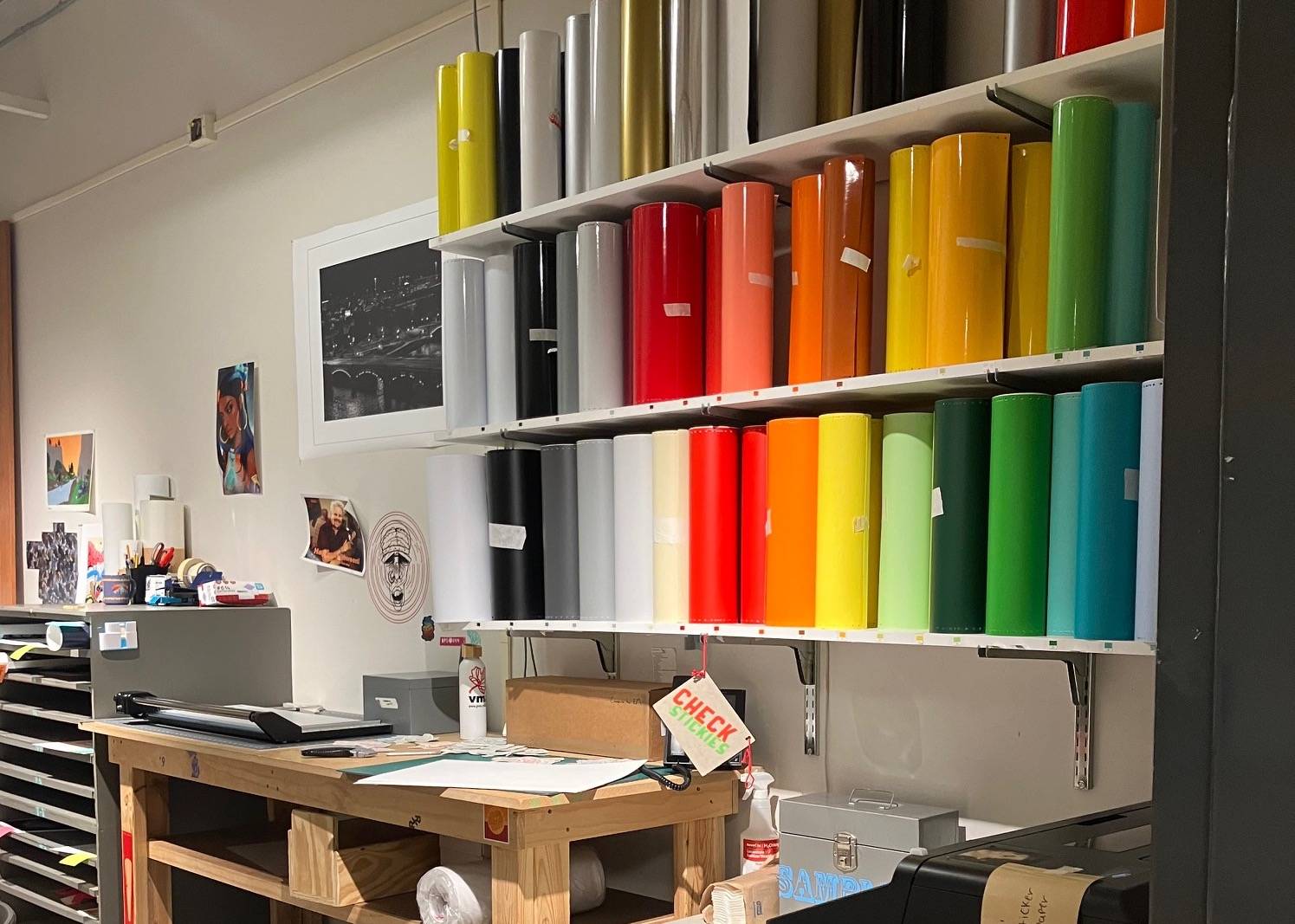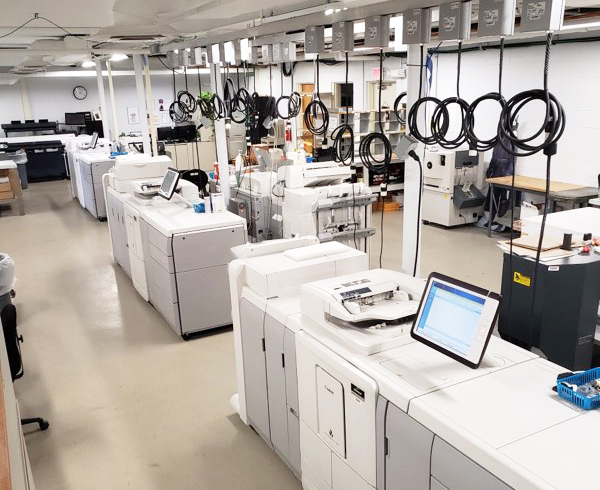The Ultimate Guide to Using Printing Services for Personalized Art Prints
Steering with the globe of personalized art prints requires a clear understanding of various printing services. Musicians should consider elements such as printing strategies and materials to attain the desired outcome. Each decision, from artwork prep work to color calibration, plays an important role in the final item. As they discover these elements, artists can reveal the possibility for their work to get in touch with audiences in a significant method. What steps can they require to guarantee their prints attract attention?
Understanding Different Types of Printing Solutions
Lots of individuals might ignore the intricacies of printing services, recognizing the different kinds available is crucial for any person looking to create customized art prints. One of the most typical types consist of electronic printing, balance out printing, and display printing. Digital printing is preferred for its quick turnaround and ability to produce top quality images directly from digital documents, making it suitable for small runs. On the other hand, countered printing deals remarkable image high quality and is economical for bigger quantities, using plates to move ink onto paper. Screen printing, commonly utilized for fabrics and advertising products, includes pressing ink with a mesh screen, permitting for vibrant shades and appearances. Each technique has its special advantages and constraints, making it essential for musicians and developers to assess their specific demands, such as amount, wanted quality, and budget, before selecting a printing solution that lines up with their imaginative vision.
Selecting the Right Products for Your Prints
Picking the proper materials is necessary for accomplishing premium custom art prints. Recognizing the different kinds of paper and the importance of ink high quality can considerably influence the result. Musicians must consider these elements to assure their vision is precisely stood for in the printed item.
Paper Kind Explained
Selecting the best paper type is necessary for achieving the preferred visual and durability in personalized art prints. Different choices exist, each offering unique qualities. For instance, glossy paper boosts color vibrancy and information, making it perfect for digital photography prints. On the other hand, matte paper gives a softer surface, which is better for artwork that needs nuance and texture. Great art paper, often made from cotton or alpha cellulose, provides historical top quality and appropriates for reproducing elaborate information in paints (Print Shop Near Me). Additionally, specialty documents, such as watercolor or canvas, can include one-of-a-kind visual impacts. Ultimately, choosing the proper paper kind will substantially influence the last discussion, ensuring that the artwork is both durable and aesthetically appealing
Ink Quality Matters
Ink high quality plays a crucial role in the overall success of customized art prints. Top notch inks assure vivid shades, sharp information, and long life, which are essential for showcasing artistic job. When picking printing solutions, musicians need to take into consideration pigment-based inks over dye-based alternatives, as they supply far better discolor resistance and shade security. Furthermore, the option of ink ought to match the chosen paper type, enhancing the print's visual impact. Environmental factors, such as moisture and temperature level, can additionally influence ink efficiency; as a result, musicians ought to ask about ink formulations that resist these components. Inevitably, purchasing remarkable ink quality can elevate the last item, ensuring that the art print holds to the musician's vision for many years to come.
Exploring Printing Strategies: Digital vs. Standard
While both standard and digital printing techniques have their distinct advantages, the choice on which technique to use typically rests on the details requirements of the artwork. Digital printing masters flexibility and rate, permitting quick turn-around times and the ability to publish as needed. This approach is particularly valuable for artists that need special items or little runs, as it removes the requirement for comprehensive arrangement processes.Conversely, standard printing techniques, such as lithography and screen printing, usually create richer colors and appearances, appealing to musicians looking for a more authentic and responsive finish. These techniques can boost the deepness and high quality of the art work, making them ideal for larger editions. In addition, traditional techniques might supply an unique visual that electronic printing in some cases battles to replicate. Eventually, the choice in between these techniques need to consider elements like preferred top quality, amount, and artistic intent, directing artists to one of the most ideal alternative for their projects.

Preparing Your Art Work for Printing
Successfully preparing artwork for printing calls for mindful focus to detail, regardless of the chosen printing technique. Artists should ensure that their data are produced at the proper resolution, typically 300 DPI, to maintain sharpness and clarity. The correct color setting, generally CMYK for print, is vital to achieve the wanted shade precision. check my source Musicians must likewise think about the dimensions of the artwork, making sure to consist of hemorrhage locations if needed, to stop any type of unwanted white edges after trimming.Additionally, file formats play an important duty; TIFF and PDF are usually preferred for premium prints. Before submission, it's crucial to assess the art work for any kind of imperfections or undesirable components. By thoroughly inspecting these elements, artists can enhance the chance of their prints straightening with their innovative vision, eventually resulting in a successful printing outcome.
The Value of Color Calibration and Proofing
Color calibration and proofing are vital actions in the printing process, as they guarantee that the last outcome accurately shows the artist's vision. Correct color calibration assurances that the shades showed on the display match those that will be printed. This process entails adjusting the monitor setups, printer accounts, and inks to accomplish a consistent shade representation.Additionally, proofing enables musicians to sneak peek their job before the last print run. This stage allows them to detect and correct any type of inconsistencies in information, saturation, or color, therefore lessening pricey errors. By utilizing digital or hard-copy evidence, artists can make enlightened decisions regarding changes needed for suitable results.Incorporating color calibration and proofing right into the printing workflow not only improves the quality of the final item yet likewise cultivates a trustworthy collaboration between the printing and the musician service, ensuring complete satisfaction and integrity to the initial art work.
Selecting the Perfect Dimension and Layout for Your Prints

Marketing and Marketing Your Custom-made Art Prints
Marketing and marketing customized art prints calls for a strong brand identification to stand out in an open market. Effective on the internet promo techniques and the calculated use of social networks systems can greatly improve presence and engagement. By integrating these aspects, musicians can develop an engaging visibility that attracts prospective purchasers.
Structure Your Brand Identity
Developing a strong brand identity is crucial for artists wanting to efficiently market and sell their custom-made art prints. This identity includes the musician's unique style, worths, and tale, which reverberate with potential buyers. Artists ought to produce a natural aesthetic visibility across all systems, consisting of logo designs, color pattern, and typography that show their imaginative vision. In addition, a clear mission declaration aids connect the musician's objective and interest. Involving narration about the motivation behind each piece can cultivate psychological connections with the target market. Consistency in messaging, whether on social media sites or packaging, boosts acknowledgment and trust fund. By meticulously curating their brand name identity, musicians can separate themselves in an affordable market, bring in devoted clients who value their artistry.
Efficient Online Promotion Techniques
What techniques can artists use to effectively advertise their personalized art publishes online? Initially, creating a professional site showcasing the art work is necessary. This site needs to consist of detailed summaries and premium images to involve potential customers. Furthermore, artists can use e-mail advertising and marketing by building a customer list to share updates, promos, and new launches. Collaborating with bloggers and influencers in the art community can increase reach and integrity. Using limited-time price cuts or exclusive pieces can also create urgency, motivating purchases. Maximizing material for search engines through relevant keywords will boost visibility. Keeping a blog site regarding the artistic procedure can attract art lovers, promoting a much deeper link with the audience and boosting the total advertising and marketing technique.
Using Social Media Operatings Systems
Social network platforms offer as effective devices for artists seeking to market and sell their customized art prints. By leveraging platforms like Instagram, Facebook, and Pinterest, artists can display their work to a huge target market. Engaging visuals and strategic hashtags can enhance visibility, drawing potential buyers to their profiles. Routinely publishing content, such as new layouts or behind-the-scenes processes, assists preserve audience rate of interest and cultivates a feeling of area. Furthermore, artists can utilize targeted advertising to reach details demographics, enhancing the possibilities of sales. Collaborations with influencers or other artists can better intensify direct exposure. Ultimately, a well-curated social networks visibility not just advertises custom art prints however likewise constructs a faithful customer base with time.
Often Asked Questions

How Do I Locate Dependable Printing Expert?
To locate dependable printing service providers, one ought to research on-line testimonials, seek suggestions from peers, contrast profiles, demand samples, and analyze customer support responsiveness. This complete technique warranties informed choices and acceptable end results.
What Is the Common Turn-around Time for Custom Prints?
The normal turn-around time for personalized prints differs by company, yet generally ranges from a couple of days to 2 weeks. Aspects influencing this include order size, intricacy, and the details printing techniques made use of.
Can I Obtain a Refund if I'm Not Pleased With My Prints?
The question of getting a reimbursement for unsatisfactory prints usually relies on the view publisher site specific printing solution's policies. Lots of business offer contentment guarantees, while others might have rigorous return problems, stressing the importance of reviewing terms beforehand.
Are There Any Hidden Costs Connected With Printing Solutions?
Numerous printing services may include surprise prices such as arrangement costs, delivery costs, or added fees for certain products. It's necessary for consumers to ask about all prospective costs before finalizing their order.
How Can I Guarantee My Prints Are Eco-friendly?
To ensure prints are eco-friendly, one should choose environment-friendly inks, recycled paper, and sustainable printing methods. Researching printing solutions that prioritize sustainability and obtaining accreditations can even more guarantee marginal environmental effect in the printing procedure. Steering through the world of customized art prints calls for a clear understanding of various printing solutions. Many individuals might neglect the intricacies of printing services, comprehending the numerous types available is essential for anybody looking to create personalized art prints. The most usual types include electronic printing, balance out printing, and screen printing. Effectively preparing art work for printing calls for mindful interest to detail, no matter of the picked printing method. Prints intended at galleries may require typical sizes to facilitate framework, whereas distinct layouts may appeal to enthusiasts looking for something distinctive.Lastly, the printing service's capacities have to be evaluated.